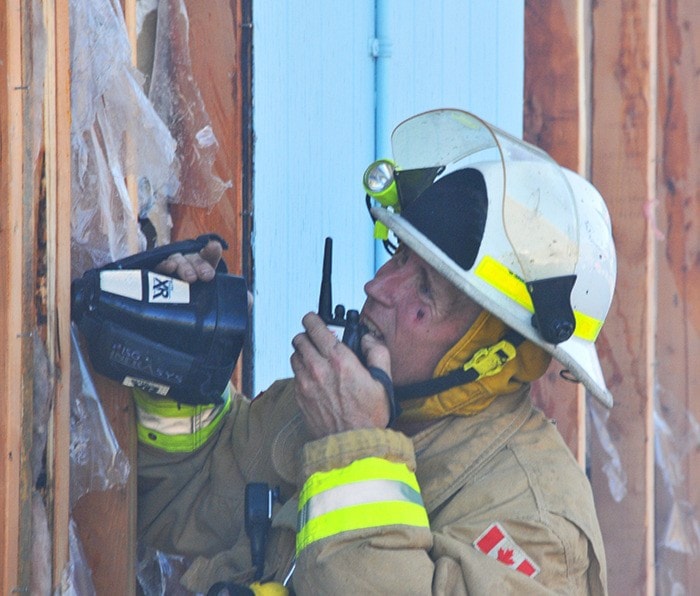The Royal Bank of Canada is springing for a new thermal imaging camera for the Cache Creek Fire Dept. after finding out how useful it was in battle the fire in its Cache Creek branch back in July.
The RBC Foundation is paying the full cost of the camera - about $13,000.
“If it helps someone else - and it will - prevent the whole structure from being damaged while they look for the fire, then it will be worth it,” said Pam Shaw, Regional Vice President BC Interior
“The thermal imager may have saved the Royal Bank building from further damage when fire broke out (on July 28),” said Cache Creek Mayor John Ranta.
Ashcroft’s Fire Dept. assisted the Cache Creek Fire Dept. and brought their thermal imaging camera. It played a huge part in identifying where the hotspots were and helped the firefighters quickly attack the affected area.
“The camera is hugely significant in a small fire department,” said Ranta.
He credits the Village’s administrator Dan Plamondon, who is also on the Fire Dept., for bringing it up with Shaw in conversation.
Ranta added that the bank has its building permits in place now and reconstruction is expected to be completed around the first week of December.
“Before Ashcroft Fire Department showed up, we had smoke coming out of the eaves around the whole building,” recalled Cache Creek Fire Chief Tom Moe, “so it was very hard to determine where the seat of the fire, even after sending a team into the building. There was just too much smoke.
“Once Ashcroft Fire brought out their camera, we found the hot spot immediately.”
The camera will be used for quickly finding the seat of a fire before it spreads, said Moe. It will also be used to find any firefighters or victims that may be trapped inside a building. It can be used to determine the effectiveness of our firefighting efforts, without physically having to be close enough to actually see. It will also be used for salvage and overhaul after the fire to detect any hot spots.
“I think it will definitely change the way we fight fires,” he said. “We will not be so quick to send firefighters into smoke filled buildings, as we can now determine the most effective point of entry. It should also decrease the amount of water we use, as we can get the water right on the fire now.”
A thermal imaging camera (colloquially known as a TIC) is a type of thermographic camera used in firefighting. By rendering infrared radiation as visible light, such cameras allow firefighters to see areas of heat through smoke, darkness, or heat-permeable barriers.
Since thermal imaging cameras can “see” through darkness or smoke, they allow firefighters to quickly find the seat of a structure fire, or see the heat signature of visually obscured victims. They can be used to search for victims outdoors on a cool night, spot smoldering fires inside a wall, or detect overheating electrical wiring. Thermal imaging cameras were credited with saving multiple lives per year through victim identification and removal from low visibility conditions as early as 1999.
“This camera will be an invaluable addition to our firefighting tool box,” said Moe. “It will help us be more efficient, and allow us a greater margin of safety.”
